Once a squatter community composed primarily of war veterans who retreated to Taiwan with the Chinese Nationalist Party (KMT) government, Treasure Hill Artist Village (寶藏巖國際藝術村) in Taipei’s Gongguan District (公館) has gradually been transformed into a weekend hot spot frequented by camera-wielding visitors, with a youth clubhouse, the latest addition to the artist village, slated to open later this year.
Now, the past and present transformations of the site are being explored with Landscape of Spectacle (如畫美景), a group exhibition that opened on the eve of the Lantern Festival last month as part of the Lunar New Year celebrations and is currently on display at Treasure Hill. It features works by 11 individual artists and groups using different media such as light, sound and found objects to express their heterogeneous ideas and feelings toward the historical community.
According to Hsiao Shu-wen (蕭淑文), director of the artist village, the inspiration for the exhibition comes from an art project completed in 2003 by visiting Finnish artist and architect Marco Casagrande, who envisioned the former veterans’ settlement as an “attic of the city where memories are stored,” Hsiao said, quoting the artist.
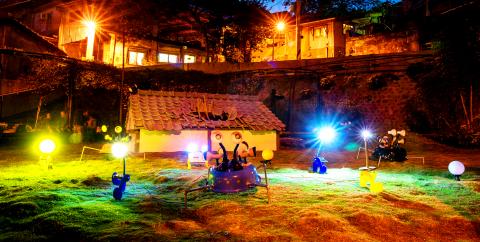
Photo Courtesy of Department of Artist-in-residence, Taipei Culture Foundation
“A decade later, Treasure Hill has become a cultural attraction,” the director said. “This is a site of historical and political significance. We are not here to criticize, but use art as a medium to explore the multiple meanings of the space.”
As exhibited art works are scattered in the labyrinth of piecemeal buildings built on the hill, visitors are encouraged to wander through the meandering alleys and narrow passageways to experience, contemplate and raise their own questions about the place, Hsiao added.
Located on a meadow near the village’s entrance, Out in Force (傾巢而出的漫遊) attracts attention with a large number of colorful light fixtures remodeled to resemble humans escaping from what appears to be a sinking house on the lawn.
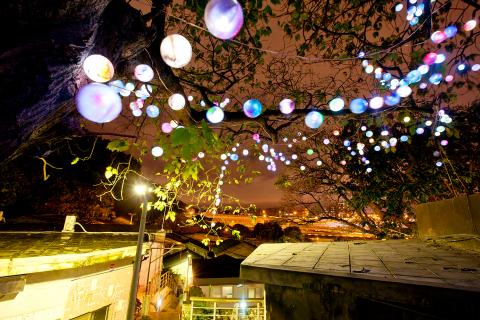
Photo Courtesy of Department of Artist-in-residence, Taipei Culture Foundation
“We try to use a cute and somewhat comic way to respond to past incidents [that happedened at the village],” explained Lin Chien-yu (林建佑), one of the artists who made Out in Force.
Lin refers to Treasure Hill’s previous incarnation as an illegal settlement. Designated a historical site in 2004, the area went through renovations begun by the city’s Department of Cultural Affairs in 2007. Most of the tenants were relocated, and only 20 households of original residents remain in the community. The artist village was officially put into operation in 2010 under the management of Department of Artist-in-residence, Taipei Culture Foundation.
Whisper on Treasure Hill (集光片語) by architect and artist Chen Chien-chih (陳建智) further examines people’s relationship with their home through an architectural work composed of a structure made of bamboo and the scaffolding that encloses it. Walking through the scaffold structure and into the building hand-built by the artist and his assistant, visitors circumnavigate the building and arrive at the “inner room,” a space surrounded by bamboo and exuding a sense of calm. Along the way, hung light bulbs glimmer as they play the artist’s pre-recorded sounds out of tiny speakers. Each light tells a different story: one repeats the sounds coming from and elderly tenant’s television; another plays the bustling ambience of the community’s celebration in which former residents rejoined the villagers to host a year-end banquet.
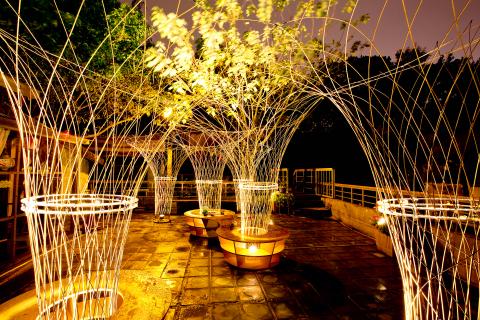
Photo Courtesy of Department of Artist-in-residence, Taipei Culture Foundation
“The protagonists are the stories told by the lights in quiet murmurs. This piece expresses the idea that the preservation of a place should include all the people who live in it,” Chen said.
Other works such as The Solar — Treasure Hill Artist Village (日光浴–寶藏巖國際藝術村) by four-member art group LuxuryLogico (豪華朗機工) approach the historical settlement with lyrical, imaginative musing. Composed of more than 220 recycled street lamps, LuxuryLogico’s large-scale light installation is intended to simulate the sun or the moon appearing to rise over the hilly village.
“You can sit on the lawn facing Sindian River (新店溪) and contemplate the luminary as it waxes and wanes,” said LuxuryLogico’s Chang Keng-hau (張耿豪).
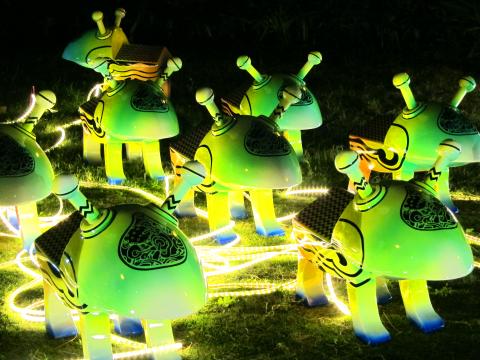
Photo Courtesy of Department of Artist-in-residence, Taipei Culture Foundation
As all participating artists use light as their main creative element, the exhibition is intended for nighttime. The works are lit from 5pm to 9:30pm, with guided tours of the exhibition starting at 7pm on weekdays and 6pm and 8pm on weekends. Group tours can be arranged in advance by filling out the reservation form available online at www.artistvillage.org.

March 31 to April 6 On May 13, 1950, National Taiwan University Hospital otolaryngologist Su You-peng (蘇友鵬) was summoned to the director’s office. He thought someone had complained about him practicing the violin at night, but when he entered the room, he knew something was terribly wrong. He saw several burly men who appeared to be government secret agents, and three other resident doctors: internist Hsu Chiang (許強), dermatologist Hu Pao-chen (胡寶珍) and ophthalmologist Hu Hsin-lin (胡鑫麟). They were handcuffed, herded onto two jeeps and taken to the Secrecy Bureau (保密局) for questioning. Su was still in his doctor’s robes at

A vaccine to fight dementia? It turns out there may already be one — shots that prevent painful shingles also appear to protect aging brains. A new study found shingles vaccination cut older adults’ risk of developing dementia over the next seven years by 20 percent. The research, published Wednesday in the journal Nature, is part of growing understanding about how many factors influence brain health as we age — and what we can do about it. “It’s a very robust finding,” said lead researcher Pascal Geldsetzer of Stanford University. And “women seem to benefit more,” important as they’re at higher risk of
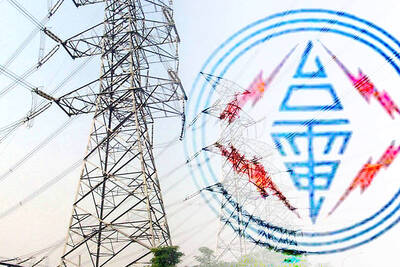
Last week the Democratic Progressive Party (DPP) said that the budget cuts voted for by the China-aligned parties in the legislature, are intended to force the DPP to hike electricity rates. The public would then blame it for the rate hike. It’s fairly clear that the first part of that is correct. Slashing the budget of state-run Taiwan Power Co (Taipower, 台電) is a move intended to cause discontent with the DPP when electricity rates go up. Taipower’s debt, NT$422.9 billion (US$12.78 billion), is one of the numerous permanent crises created by the nation’s construction-industrial state and the developmentalist mentality it
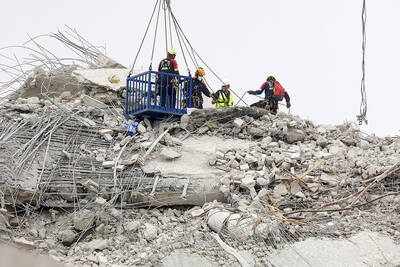
Experts say that the devastating earthquake in Myanmar on Friday was likely the strongest to hit the country in decades, with disaster modeling suggesting thousands could be dead. Automatic assessments from the US Geological Survey (USGS) said the shallow 7.7-magnitude quake northwest of the central Myanmar city of Sagaing triggered a red alert for shaking-related fatalities and economic losses. “High casualties and extensive damage are probable and the disaster is likely widespread,” it said, locating the epicentre near the central Myanmar city of Mandalay, home to more than a million people. Myanmar’s ruling junta said on Saturday morning that the number killed had